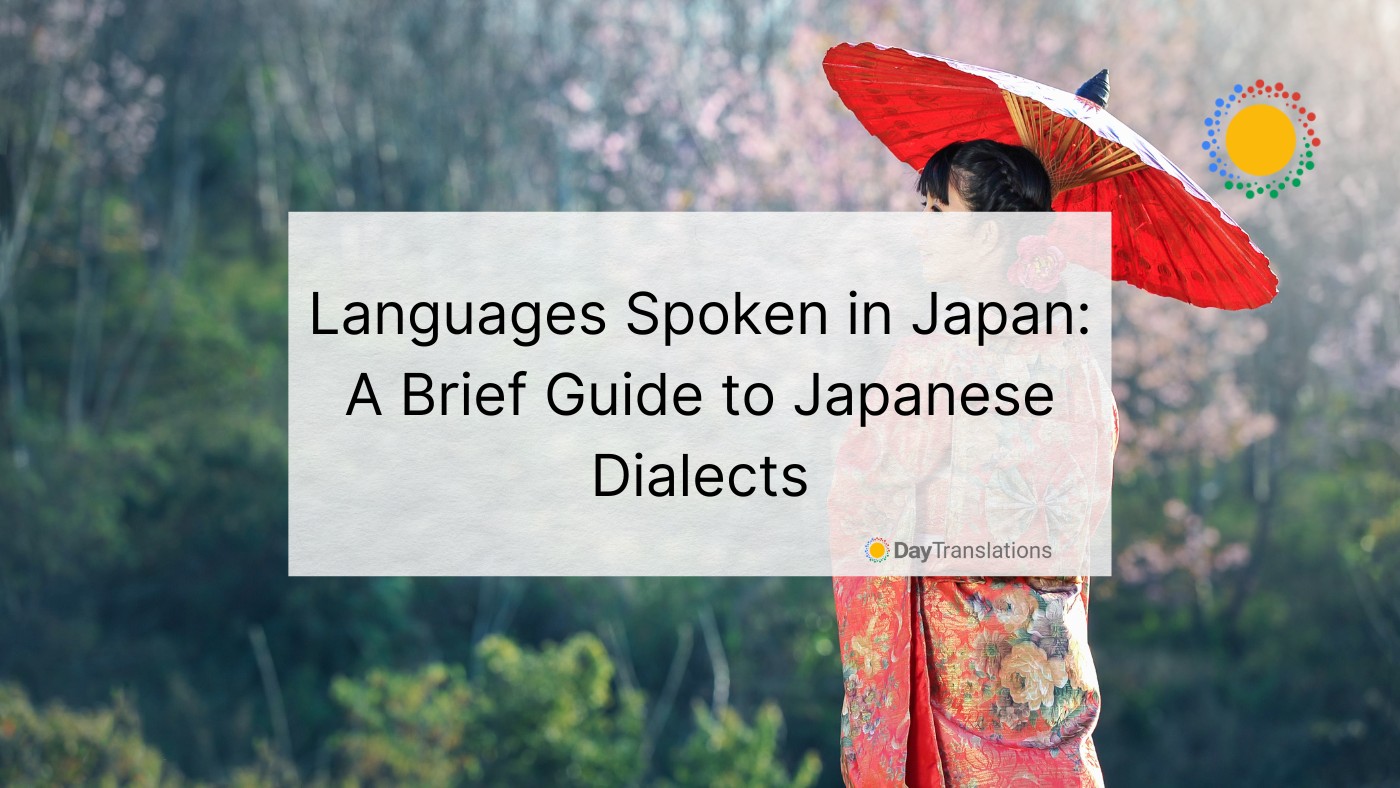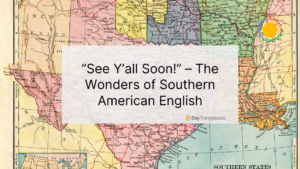Updated 2022
Japan is an island country located in East Asia, comprising around 6,852 islands, which is one of the reasons why there are several languages spoken in Japan. Around 97% of the land area of Japan is made up of the largest islands, Shikoku, Kyushu, Hokkaido and Honshu. The Japanese refer to them as their home islands.
Based on archeological research, the island of Japan was inhabited since the early Paleolithic period, with the country being first mentioned in books regarding Chinese history from the first century AD. Ancient Japan was largely influenced by Ancient China aside from other regions. The periods of isolation from Western countries have a great effect on the history of Japan.
Ancient inhabitants of the country spoke a language that is not known. Today, most of the 127 million inhabitants of Japan speak Japanese or Nihongo which belongs to the Japonic language family.
Japanese language
Around 98.5% of the population is made up of ethnic Japanese. While most speak Nihongo, Japan has several languages, many of which are mutually unintelligible. But did you know that while Japanese is the lingua franca, it is not the official language?
That is because there is no existing law that establishes that Nihongo is the official language of Japan. Japanese is greatly influenced by the Chinese language and Chinese characters, which is evident in the kanji Chinese characters still being used today. Modern Japanese borrowed many words from other foreign languages. It still uses Chinese numerals mixed with Arabic numerals.
There is scarce material regarding the origin of the language. Scholars believe that settlers from continental Asia or the Pacific Island brought the language to the country. It replaced the language that was previously spoken by the ancient Jomon inhabitants.
Based on the latest data figures from Ethnologue, in terms of first language speakers, Japanese ranks ninth among the most spoken languages in the world. First language speakers around the world reached 128.2 million, with 127 million in Japan and 121,500 in other areas.
Languages Spoken in Japan
Several languages or dialects in Japan include the Ryukyuan languages, Ainu languages, the Orok language and the Nivkh language. These languages belong to two language families spoken in Japan – the Japonic languages and the Ainu languages.
The Japonic languages (language family) include the following:
- Japanese languages: Hachijo, Eastern, Western and Kyushu
- Ryukyuan languages: Northern Ryukyuan languages including Amami, Kunigami and Okinawa and Southern Ryukyuan languages such as Miyako, Yaeyama and Yonaguni.
The Ainu languages have three dialects. Two languages, Sakhalin Ainu and Kuril Ainu are already extinct. Only the Hokkaido Ainu language remains.
Status of Japanese Languages
Many of the languages that are still spoken today are on the brink of extinction because only a few people from the older generation still speak them. For example, Ryukyuan, which has many speakers, closely resembles Nihongo. However, its use has declined in recent years because the younger generation prefers to speak Nihongo. According to UNESCO, Ryukyuan is already endangered.
Hokkaido Ainu is also heading for extinction as there are only 10 fluent speakers left, with most of them in their 80s. Scholars estimate that it will disappear within 10 years if nothing is done to preserve it.
The Nivkh language is a language isolate. It is spoken by the Nivkh people living close to the Amur River. It has about 200 native speakers.
Japanese people living in the Bonin Islands speak Bonin English, a creole that is English based but heavily influenced by Japanese. It’s estimated that there are still around 1,000 to 2,000 speakers of the language.
Uilta or Orok language is spoken by Japanese people living close to the Russian continent. The latest data showed that there are about 50 to 100 native speakers, so it is already classified as critically endangered.
Languages Spoken around the Japanese Islands
Japan issued a standard language policy, meaning Nihongo is used as the medium of instruction. It is also used in business and widely used in everyday life of most Japanese, especially those living in the metropolitan areas. However, the situation is different around the smaller islands of Japan, where the local language is still dominant at least for the older generation.
Miyako Language
This language is used by the people inhabiting the Miyako Islands, which is found southwest of Okinawa. About 67,000 Japanese people speak Miyako as a first or second language, although many of them are fluent in Nihongo. Most of the speakers of Miyako are aged 60 and older.
Yaeyema Language
This is another Ryukyuan language like Miyako and is spoken on the Yaeyama island group. Only the older people use the language in their prayers and songs. The rough estimate is that only 47,000 people are able to speak Yaeyama or Yaimamunii, its local name. The language closely resembles Miyako. It’s divided into three dialects: Taketomi, Iriomote and Ishikagi. Yaeyema, which is spoken around the Ryukyu islands, is distinct for having six short vowel sounds and seven long vowel sounds.
One small island belonging to the Yaeyema group that is very close to Taiwan is called Yonaguni. Inhabitants of the island speak Yonaguni, which is quite close to the other Ryukyuan languages. It’s quite unique for its written language form that looks like pictographs or hieroglyphs, called Kaidaa.
Amami Language
Although Amami, a Ryukyuan language, is spoken on the Japanese islands near Kyushu, Japan does not officially recognize it as a language, thus it is classified as a dialect. There are variances among these languages and dialects themselves when you go around the Japanese islands. Amami is particularly closer to the Okinawan language. It is even split into two sub-dialects: Northern Amami (Kikaijima dialect and Northern Ōshima dialect) and Southern Amami (Southern Ōshima dialect and Tokunoshima dialect). Interestingly, the language spoken in the southernmost islands of Yoronjima and Okinoerabujima, which belong to the Amami group, is classified as Kunigami language rather than Amami.
Kunigami, also called as the Northern Okinawan language is used in the Yanbaru region, particularly in Nago City and Kunigami District. It is another of the endangered languages, with about 5,000 speakers as of 2004.
Okinawan Language
In the southern half of Okinawa and on the islands of Aguni, Tonaki, Kumejima and Kerama, the dominant language is Okinawan, which is also known as Central Okinawan. While many poems and songs were written in Okinawan, UNESCO has declared it an endangered language as well. Part of the cause of the decline in usage is the shift of many speakers to the Japanese language. It is still used in shows for tourists, in popular music and in theater dramas that show local manners and customs.
Hachijō Language
This language is spoken on the Izu Islands located south of Tokyo, on Hachijō Island itself and on Aogashima and the Daitō Islands. It is a distinct Japanese language that has retained features from the ancient Eastern Japanese, based on the 8th century records of Man’yōshū. It has some similarities to the Ryukyuan languages and the Kyushu dialects.
These are the most common languages spoken in Japan today. There are several more minor dialects used on the smaller islands that are isolated from the mainland. However, after Japan opened its doors after years of isolation, a number of foreign languages were introduced to the country. Today, it is possible to hear French, Spanish, Russian, Portuguese, German and English spoken around Japan. You’ll also hear Chinese, Korean, Thai, Vietnamese and Turkish spoken in some areas.
Western vs Eastern Japanese
It should be noted that two forms of standard Japanese exist. The Standard Japanese is called Hyojungo. This is the form of Japanese that is taught in educational institutions around Japan. It is also used in official communications and by media. Hyojungo is further subdivided into kogo or the oral language and bungo, which is the literary language. They differ in vocabulary and grammar. The other form is called Kyotsugo, which is the classified as the common language. The Japanese language also differs in the accent with a long-standing divide between Western and Eastern Japanese. The west features the Kansai-accent and the east uses the Tokyo accent, which is simpler.
Accurate and High-Quality Japanese Translations
With the different languages and dialects used in different parts of Japan, it is essential to know which one is the preferred language when you are presenting documents and proposals to your Japanese colleagues. Ensure that your documents translated into Japanese are in the correct Japanese language by working with the native-speaking translators of Day Translations, Inc.
We are a professional translation company that offers a full suite of language services, assuring you of consistent and accurate translation and other services promptly. We work with over 100 languages and we give you the assurance that our Japanese translation services are one of the best. You do not have to wait for the next business day to get in touch with us. We are open 24/7, 365 days of the year. Give us a call today at 1-800-969-6853. If you prefer, you can reach us through email at Contact us, so get in touch with us in whatever time zone you are in.












Sorry, the comment form is closed at this time.